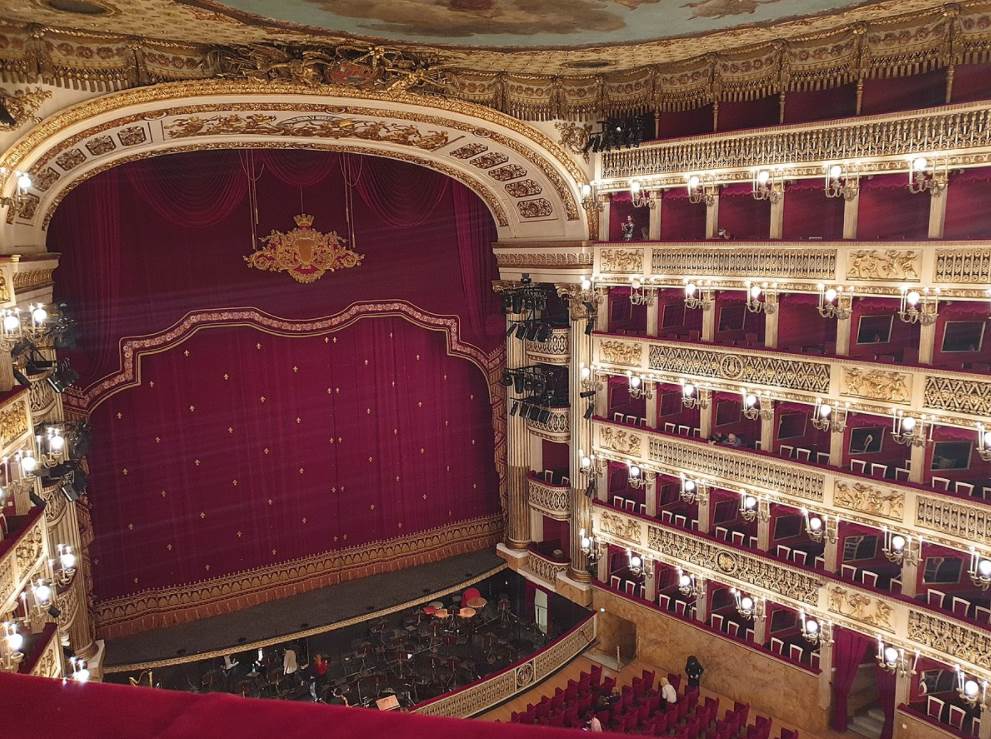It’s hard to imagine but this famous opera house in Naples, a major city in southern Italy, has been operational for nearly 3 centuries. This makes it the oldest continuously operating opera house in the world.
Let’s take a closer look at some of the most interesting facts about the Teatro di San Carlo, a building in Naples with an extended history that has some fascinating stories to tell.
1. It’s located right next to the Royal Palace in the heart of Naples
The Teatro di San Carlo is the main opera house in Naples and is connected to the Royal Palace of Naples, a fascinating palace that became one of the 4 royal residences of the Kings of Naples in 1734.
The Royal Palace now serves as a museum and a popular tourist attraction in the city. Both the palace and opera house are located in the central part of Naples, the third-largest city in Italy after Rome and Milan.
Other interesting landmarks in the area are the Piazza del Plebiscito, a large public square lined by the Greek-style columns of the Basilica Reale Pontificia San Francesco da Paola, and the Castel Nuovo, a medieval fortress that features a remarkable arch between two of its towers.
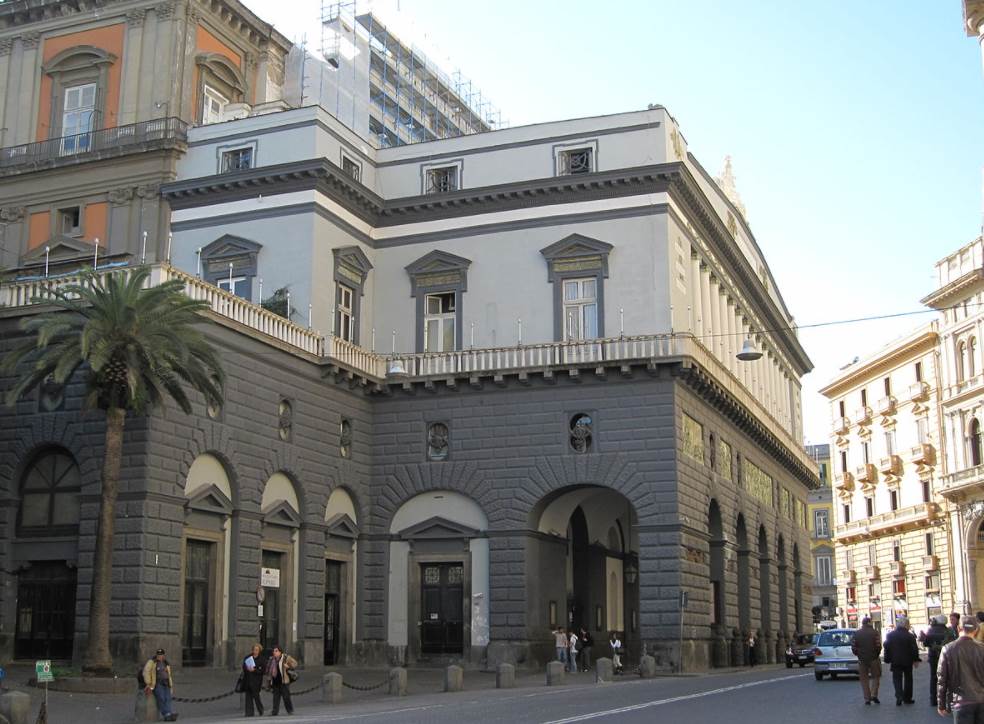
2. It was commissioned by the Bourbon King of Naples in the 18th century
The Teatro di San Carlo was commissioned by Carlos Sebastián (1716-1788) in 1734, a man who went by a whole list of titles throughout his life, including that of Charles III as the King of Spain between 1759 and 1788).
The young man was the King of Naples as Charles VII between 1731 and 1735 and quickly became the King of Sicily as Charles V, a position he held between 1735 and 1759.
The Bourbon King spent quite a bit of money in the area, including one of the most amazing Baroque buildings ever constructed, the opulent Palace of Caserta just outside of Naples. The opera house itself cost a whopping 75,000 ducats to build.
The opera house is officially known as the “Real Teatro di San Carlo” or “Royal Theatre of Saint Charles” but is often simply referred to as the Teatro San Carlo.

3. The opera house replaced an even older 17th-century theater in the city
Alessandro Scarlatti (1660-1725) was a popular opera composer of the Baroque era and the man credited with establishing the Neapolitan school of opera. This means that the opera scene had grown exponentially during the late 17th and early 18th centuries.
Until the arrival of King Charles VII of Naples, the operas were held at the Teatro San Bartolomeo, a venue that was built in 1621. Remarkably, there were even 2 opera houses before this one was built called the Teatro della Commedia Vecchia (1550) and the Teatro dei Fiorentini (the early 1600s).
The Teatro San Bartolomeo was becoming seriously outdated in the early 18th century and was replaced by the Teatro di San Carlo between 1734 and 1737. It was eventually inaugurated on November 4, 1737, the name day of the King of Sicily at the time.
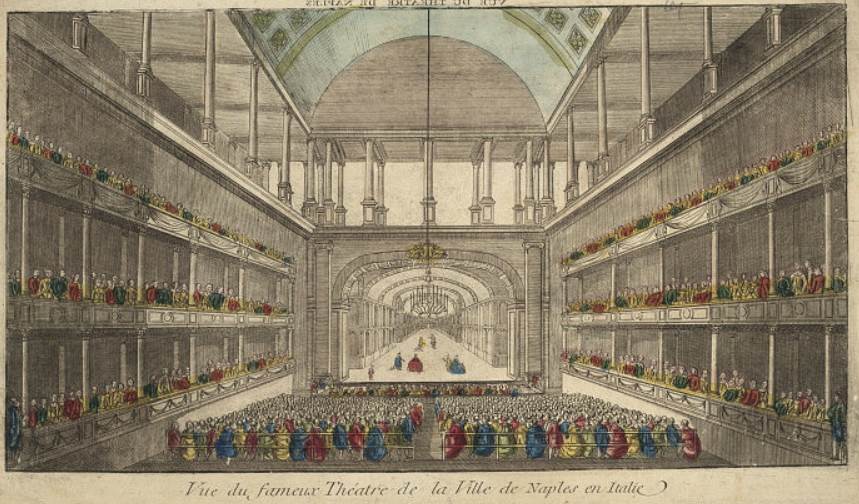
4. It features the oldest horseshoe-shaped auditorium in the world
Perhaps one of the most remarkable facts about the Teatro di San Carlo is that it was designed by an Italian architect who originally made a career in the military of Charles of Bourbon.
The designer of the horseshoe-shaped auditorium and magnificent building was a man named Giovanni Antonio Medrano (1703-1760). He was also the designer of the Palace of Capodimonte, one of the 4 residences of the Bourbon monarchy in and around Naples.
Medrano was assisted by Angelo Carasale, the former architect of a renovation project of the Teatro San Bartolomeo. The King appreciated their work and initiated a standing ovation for the architects from the public.
The auditorium is the oldest horseshoe-shaped of its kind in the world.
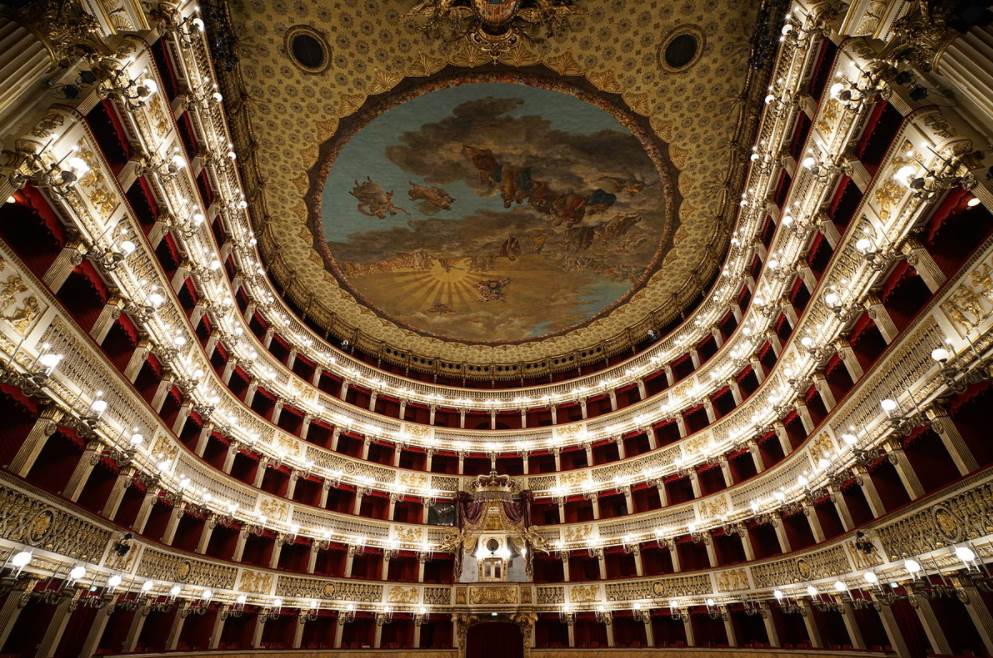
5. It was the biggest opera house in the world upon completion
The auditorium had a length of 28.6 meters, a width of 22.5 meters, and featured 184 boxes with seats. The seating capacity of the opera house was 1,379 and the total capacity could be expanded to well over 3,000 including standing places.
The fact that it was constructed well before the famous opera house in Italy, including La Scala in Milan and La Fenice in Venice, made it the largest opera house in the world upon completion in 1737.
The sheer size of the building didn’t compromise the level of theatrical decorations as it featured an incredible amount of gold and blue decorations and exuberant architectural features of the Baroque era.
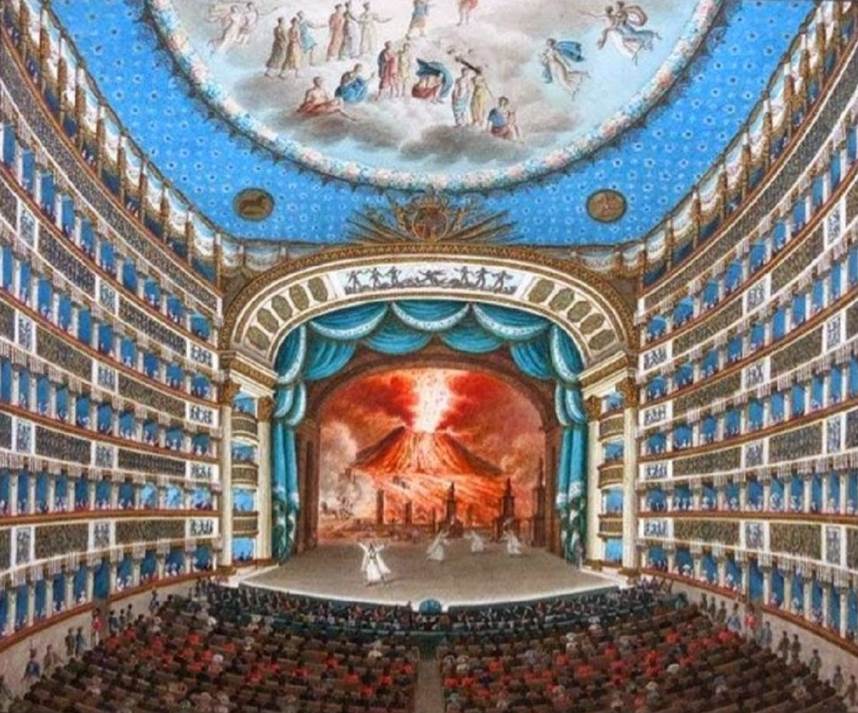
6. Part of the building was rebuilt after a fire destroyed it in 1816
Unfortunately, the lavish original version of the opera has been permanently lost to history in a fire that occurred on February 13, 1816. Many parts of the building were destroyed and it was completely rebuilt in just 10 months.
The new building was commissioned by another Bourbon king named King Ferdinand IV, the son of Charles III who built the original version. The new version was slightly bigger and had 1,444 seats and a stage depth of about 30 meters (98 feet).
The size of the new building didn’t benefit the acoustics as one critic once remarked in 1817:
Although the singers have very strong voices, only their highest and most stentorian tones could be heard. Any kind of tender utterance was lost.
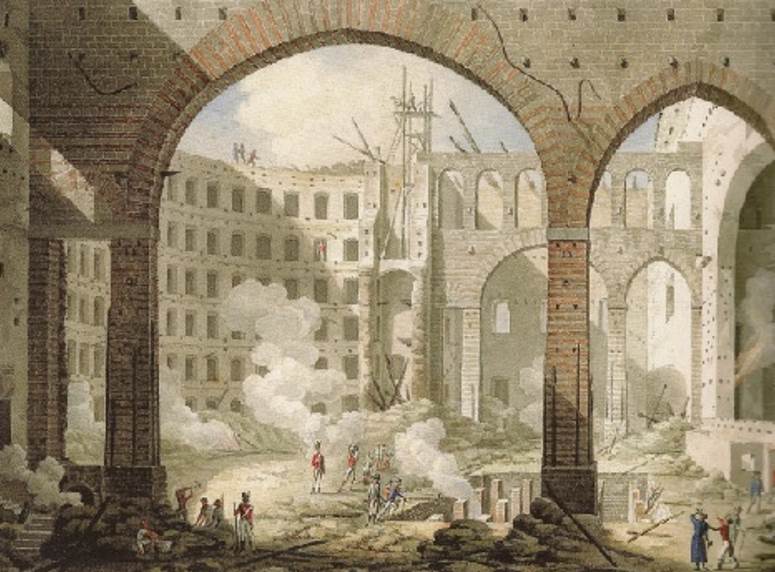
7. The opera house was destroyed once more during a bombing in 1943
The building completed in 1817 underwent no structural changes until the next devastating event that destroyed large parts of it, the bombing in 1943 during the liberation of Naples in 1943.
The damage wasn’t as extensive as the one caused by the fire in 1816 and once the foyer was rebuilt, the opera house managed to open its doors again shortly after. The first opera following the bombing was held on December 26, 1943.
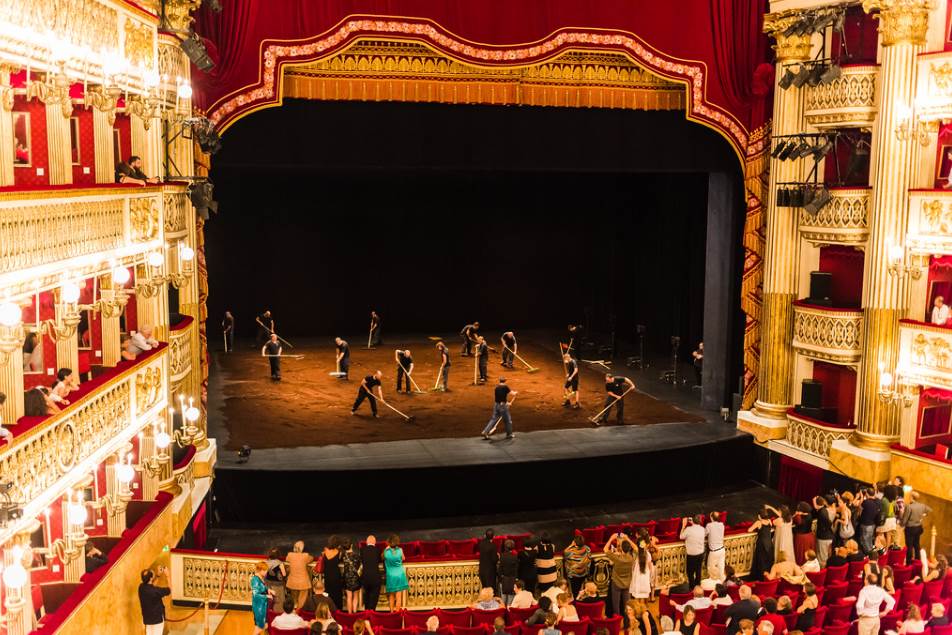
8. A €67 million renovation modernized the building in the 21st century
The renovation project during World War II didn’t include the upgrade to modern facilities. This became painfully obvious at the start of the 21st century when most major opera houses in the world had been completely renovated and modernized.
The Teatro di San Carlo received a very welcome upgrade between 2008 and 2009 and opened its doors again for an opera performance on January 27, 2010, an event attended by Italian president Giorgio Napolitano.
The gold decorations included are reminiscent of the ones that once decorated the Baroque version of the opera house in the 18th century, and the building was returned to the glory of the renovation project conducted in 1817.
